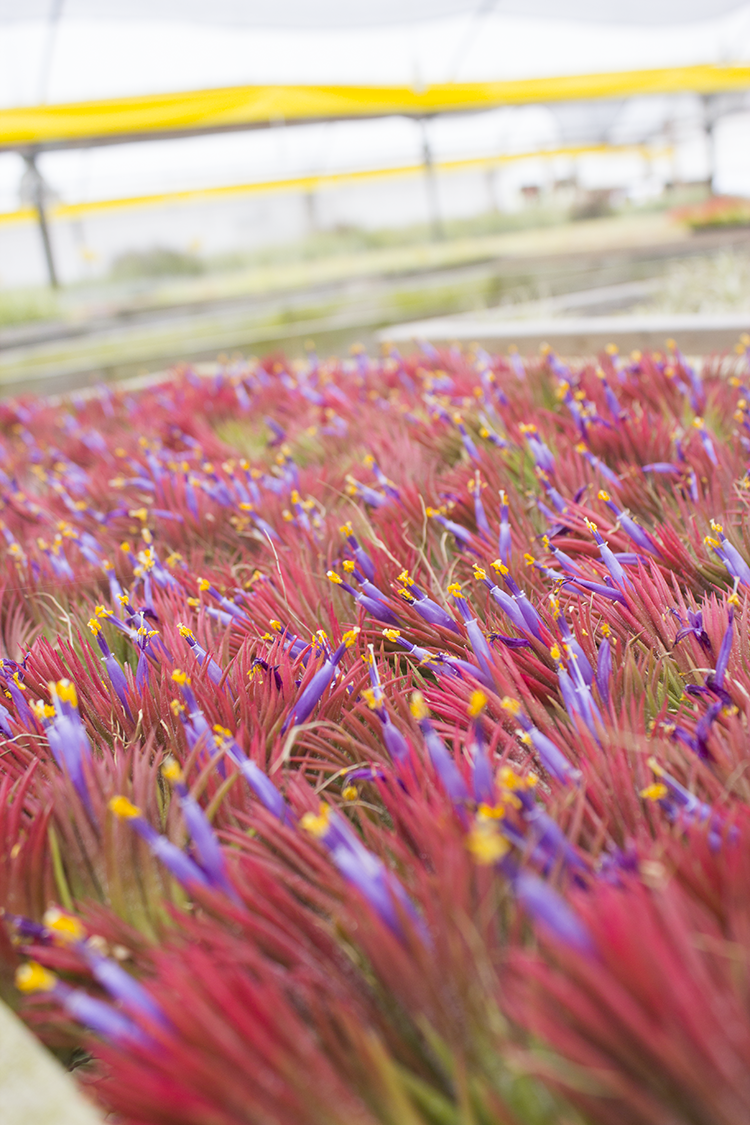Blooming Air Plants
Air Plants produce some of the most beautiful and striking blooms. Every Airplant will bloom, but not all plants bloom the same way.
Flowers
The most common bloom color within the Tillandsia genus is violet / purple. This can be found with varieties such as Ionantha Guatemala, Xerographica, Brachycaulos and many more. Other colors such as green, yellow, red, white, and plum are not as common. Red flowers are produced by varieties such as Andreana and Funckiana. Yellow can be found in varieties Crocata and Schiedeana. White is usually associated with yellow or white blushing varieties. This would include Ionantha Druid and Plagiotropica. Another feature of some flowers is fragrance. Some varieties produce strong aromatic flowers! Duratii's flowers are known to have the fragrant of grape, while a crocata smells more like a tuberose.
 Aeranthos v. Aemula in bloom
Aeranthos v. Aemula in bloom
Bloom / Inflorescence
Besides flowers, an Air Plants Inflorescence makes a big part of how the flowers are displayed. Below is a photo of T. Polita. This particular plant has not bloomed yet, but is showing its inflorescence, also known as a bloom spike. This multi-branching inflorescence is very different amongst species in the genus. Here the plant has multiple spikes, meaning when the plant blooms it will show numerous flowers. Varieties such as Xergraphica, Fasciculata, Harrisii, and Tricolor all have protruding bloom spikes. These can consist of may different colors and looks. This adds to the visual impact of the plant when it blooms! Another big difference between species is the amount of time the inflorescence takes to develop and actually produce flowers. This is important because the selling window is a lot higher on a plant that takes longer to develop. Xergraphica is a great variety to sell because the bloom spike will take months to fully develop and flower, giving you more time to sell it in optimal condition.

Polita about to Bloom
Some varieties do not produce an inflorescence and simply flower. Though that seems boring, many of these varieties change color when they are in bloom. These varieties include Ionantha and Brachycaulos. Below is an image of Ionantha in bloom.

Xerographica in Bloom - Multi Branching

Ionantha in Full Bloom
Natural vs. Treated
Lastly, at Plantaflor we have a weekly list of plants that are currently in bud. Some plants naturally cycle 2-3 times a year, while others only bloom once a year. Unlike most Succulents, Tillandsias are monocarpic. They only bloom once in their lifetime. Though that seems disappointing, that does not mean the plant is useless once it blooms. After the bloom cycle is finished, the plant knows it must focus on producing as many offspring as possible. Over the course of 6 months, the plant will go from a single plant to a cluster, also known as clump. Below is a clump of Tillandsia Rubra.

Ionantha Rubra Balls
As plant growers we understand the desire for customers to have blooming plants in their stores. So we have developed a blooming program. Every week we treat a nice selection of plants, so we can offer budding plants. We use blooming hormone to trigger the plant into the blooming cycle. These varieties include Aeranthos Negra and Ionantha Druid, and more!

